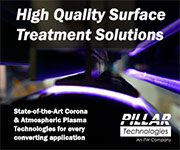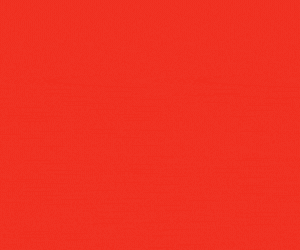Video web inspection goes quickly from luxury to necessity.
- Published: November 01, 1996, By Mykytiuk, Andrew
What happens when an inspector discovers a defect at the rewind station? If the defect is a major one, the entire job may be thrown into the dumpster and started anew. The problem with this outdated inspection technique is that the quality inspector views the product after it has been printed - too late for any corrections. And what if the defect is missed until it's detected by the customer?
Today's vision systems allow printing to be inspected in real time at speeds to 3,000 fpm. The stop-action images are captured, presented on a color video monitor, and magnified. They can be analyzed to such a degree that even the smallest defects such as hickeys and fill-ins are clearly visible.
For centuries the trained human eye and a magnifying glass were the front line in the war against printing defects. More recently, rotating mirrors and strobe lights helped press operators produce better product. It wasn't until the early 1990s that video web inspection systems developed to the point where they became commercially feasible.
Vision systems have come a long way in a short time. According to John Thome, director of North American sales and marketing for BST Pro Mark Technologies Inc., in five years the systems have evolved to a point where they can improve pressroom productivity, result in higher quality, and reduce waste.
The critical advantage, says Lisa Miller, marketing manager for PC Industries, is that a press operator can actually capture and see every image at full press speed.
"With strobe lights, if your eye can't pick out the defect, you're out of luck and you can't run at full press speed," says Miller. "On a video inspection system, the camera is actually synchronized with your press, takes a snapshot twice every second, and brings the image up on the color monitor. You can then zoom in or out on the image or traverse the camera to inspect different sections of the web."
Adds Jim Doerr, sales manager with TruColor Video Systems, "With strobe light inspection systems, after six or seven hours the eyes get fatigued, it's difficult to make effective color comparisons, and you have a hard time seeing the smaller defects."
Miller says that the main push for vision systems come from the press operators themselves. "Operators will tell you that once they start using video inspection it makes their jobs easier, and they produce a better, more defect-free product."
She points out that the average increase in productivity is about 40%. "This equipment has been out there long enough for these numbers to have been proven and documented."
Doerr says that in 1990 video web inspections were the exception, and today they have become the norm. "In fact, you'll lose business if you don't have video web inspection on your press," he notes. "I'm hearing this all the time."
"I just had someone tell me the reason they're looking to acquire a vision system is they just lost one of their largest accounts," says Miller. "And the customer told them they're not coming back until they get video inspection. Not only do we have press operators on our side, but now we're seeing customers demanding it from their suppliers."
In addition to productivity increases and improvements in quality, vision systems also reduce waste. Because operators can see a defect as it makes its appearance and begins to form, they can quickly make the necessary corrections on the fly. "Not only can they catch a problem before they've created waste, but they're doing it on-line at full press speeds," says Miller. "From the studies we've done, we estimate the reduction in waste to be 30 percent per month. I recently had a customer tell me they saved $16,000 dollars through waste reduction in a single month."
Doerr reports that the biggest objection to buying a video web inspection system used to be price. But he says that in the past 18 months to 2 years the prices of these systems have come way down to the point where virtually everyone can afford one. So now the three main benefits of vision systems - increased productivity, reduced waste, and improved quality - are available in systems tailored to fit every budget and application.













